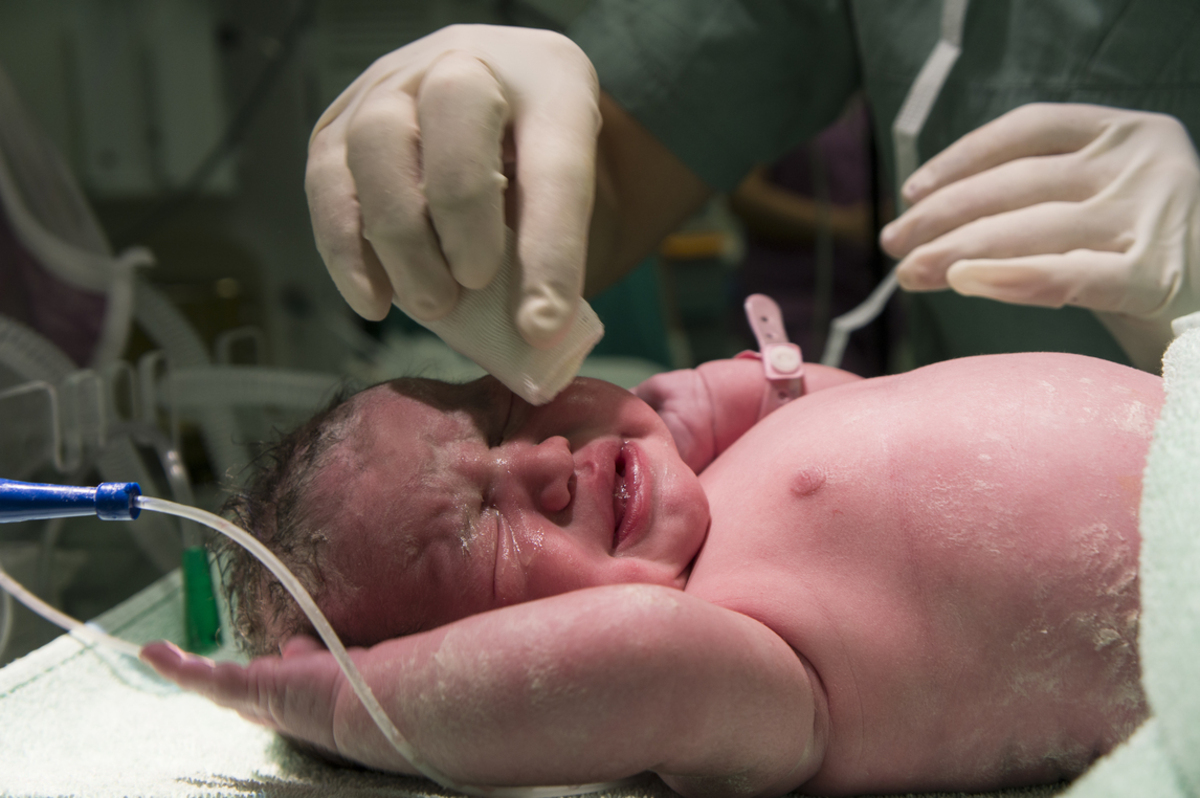Tetralogy of Fallot is a rare congenital disease in which four individual heart defects are present from birth. The combination of these heart defects can cause oxygen-poor blood to leave the heart and be delivered to the rest of the body.

Understanding tetralogy of Fallot: The conditions that comprise this defect
Tetralogy of Fallot is made up of four separate conditions:
- Pulmonary valve stenosis is a narrowing of the pulmonary valve that is meant to help blood flow toward the lungs, leading to a reduction in blood flow to the lungs.
- A ventricular septal defect is a hole located in the wall of the heart that causes oxygen-poor blood and oxygen-rich blood to become mixed. Xixed oxygen-rich and oxygen-poor blood ends up being sent to the rest of the body, causing the heart to work harder and eventually weakening it.
- Overriding aorta is defect in which the aorta (the main artery that leaves the heart and goes to the body) is shifted slightly to the right and is above the ventricular septal defect. This causes the aorta to receive blood from two different parts of the heart – causing oxygen-rich and oxygen-poor blood to be mixed.
- Right ventricular hypertrophy is a disease in which the muscular wall of the right side of the heart becomes too thick due to overworking of the heart. This can cause the heart to become stiff, weak, and eventually fail.
In rare cases, people born with tetralogy Of Fallot may have other heart defects as well, such as an atrial septal defect (a hole between the top two chambers of the heart), right aortic arch, or abnormalities of the coronary arteries.
What are the symptoms associated with tetralogy of Fallot?
Symptoms of tetralogy of Fallot vary depending on how severe the condition is and how extensive the obstruction of blood flow from the heart to the lungs is. Symptoms associated with tetralogy of Fallot include:
- Cyanosis, a bluish tint of the skin caused by low blood oxygen levels.
- Fainting
- Fingers and toes are clubbed.
- Issues with growth and weight gain.
- Getting tired or fatigued easily during play or exercise.
- Being irritable
- Prolonged crying
- Hearing a heart murmur
- Tet spells, when babies suddenly develop deep blue skin, nails, and lips after they have been crying or feeding. This can also occur when they are agitated. These spells occur when there is a rapid drop in the amount of oxygen in the blood and mostly develops in very young children between two and four months old.
What risk factors are associated with tetralogy of Fallot?
While the exact cause of the disease is not known, the known risk factors include:
- A maternal viral illness during pregnancy.
- Heavy alcohol use during pregnancy.
- Poor nutrition during pregnancy.
- A maternal age of over 40 during pregnancy
- One parent has a tetralogy of Fallot.
- The child has Down syndrome or DiGeorge syndrome.
How is tetralogy of Fallot diagnosed?
Tetralogy Of Fallot may be diagnosed during pregnancy, if the parents opted for prenatal screening tests or the defect is visible on an ultrasound. Where it is diagnosed after birth, doctors may initially suspect the condition if they notice that the baby has a bluish skin tone or if they hear a heart murmur (an abnormal whooshing sound due to turbulent blood flow) on the stethoscope.
The doctor will then ask for the baby to undergo different types of diagnostic tests, including:
- An echocardiography, which uses ultrasound waves to create a moving image of the heart. This is the most common test used to diagnose tetralogy Of Fallot. An echocardiography can also be used to plan treatment for this condition.
- Electrocardiogram, a test that measures the heart's electrical activity and that helps determine whether the right side of the heart is enlarged and if the heart rhythm is regular.
- Chest X-ray, to visualize the structure of the heart and lungs to determine whether the right ventricle is enlarged.
- Pulse oximetry, a test that uses a sensor on a clip that is placed on a finger and measures the amount of oxygen in the blood.
- Cardiac catheterization, a test that helps doctors get a detailed view of the heart and all its structures, and which can be used to plan out treatment.
How is tetralogy of Fallot treated?
The only effective treatment for tetralogy of Fallot is surgery, which includes intracardiac repair or a temporary technique that uses a shunt. Most babies with the disease will have intracardiac repair. The best surgical choice, and its timing, will be based on the child’s condition. The are the two types of procedures used are:
- Intracardiac repair. This is a type of open heart surgery performed one year after the baby has been born. Multiple repairs are made during this operation. Adults can undergo this procedure if they didn’t have a surgical repair earlier in life. After this surgery, oxygen levels in the blood rise and symptoms are reduced.
- Temporary surgery. Babies may undergo temporary surgery that can help improve blood flow to the lungs. Further procedures can then be planned later on.
- Apitz, C., Webb, G. D., & Redington, A. N. (2009). Tetralogy of fallot. The Lancet, 374(9699), 1462-1471.
- Bailliard, F., & Anderson, R. H. (2009). Tetralogy of fallot. Orphanet Journal of Rare Diseases, 4(1), 2.
- Bertranou, E. G., Blackstone, E. H., Hazelrig, J. B., Turner Jr, M. E., & Kirklin, J. W. (1978). Life expectancy without surgery in tetralogy of Fallot. The American journal of cardiology, 42(3), 458-466.
- Photo courtesy of SteadyHealth


Your thoughts on this